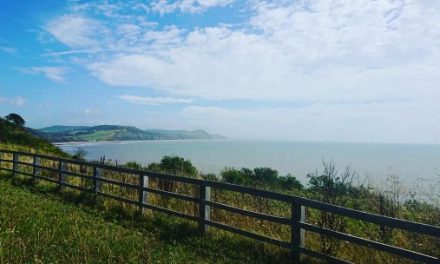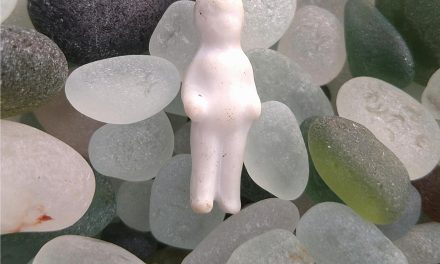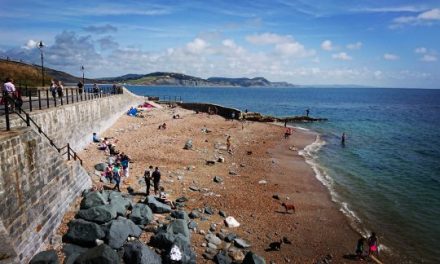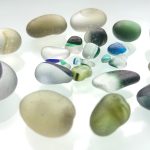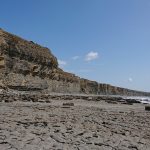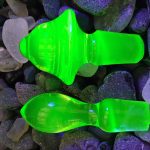The value of sea glass can differ from one person to the next. What one person sees as valuable, another won’t. As the saying goes, “something is only worth what someone else is willing to pay.” So what is sea glass worth? The price is entirely dependent on what someone is willing to pay for it. People from all over the world are eager to pay decent prices just to get their hands on a piece of rare sea glass; you just need to find the right piece and the right buyer.
What to expect from our article
- 1 What is sea glass?
- 2 Where does sea glass come from?
- 3 Is sea glass rare?
- 4 How did the sea glass get on Seaham beach?
- 5 What sea glass can you find at Seaham?
- 6 Where is the best place to find sea glass?
- 7 What is the most valuable sea glass?
- 8 Rare sea glass colours
- 9 Can you use uranium glass to make jewellery?
- 10 Other things you can make with sea glass
- 11 Other places to find glass
- 12 Buying Sea glass, what to look out for
What is sea glass?
Sea glass is the name given to glass that has rolled around on the beach amongst the sand, pebbles, rocks, and saltwater for many years, forming it into the smooth rounded pieces of glass you find on the beach today. We call it sea glass because it has been formed in the sea.

Where does sea glass come from?
Sea glass comes from old glass bottles that have either washed up on the beach after being discarded out at sea or from shipwrecks many years ago. It could also have spilt out from coastal refuge sites like the one at Lyme Regis, or it could also have been discarded onto the beach as waste.
Is sea glass rare?
Some sea glass is very rare, and that’s where most of its value comes from, the more unusual the colour or the pattern, the more money it is worth. Take Seaham sea glass for instance, the sea glass at Seaham comes in all shapes, sizes, colours and patterns which makes it very sought after.
It is not just the colour or the pattern of the glass at Seaham that makes it valuable, but the shape. Seaham produces some of the most beautifully smoothed sea glass that you will ever see and I think that has a lot to do with the terrain on the beach.
Seaham beach is mostly sand, but there are lots of patches of shingle, and it’s the combination of sand, seawater and shingle that makes the seaglass at Seaham so special.
How did the sea glass get on Seaham beach?
The sea glass at Seaham dates back to Victorian/Edwardian times when we weren’t as strict about discarding our waste as we are these days. See our article about ‘why is sea glass at Seaham’?
Seaham and nearby Sunderland were home to many glass factories back in the day; in fact, in the end, there were a total of eight factories all producing glass products. Just one of those factories could be producing as many as 20,000 bottles per day, including perfume bottles and decorative homeware.
As with any manufacturing process, the glass factories at Seaham and Sunderland produced a lot of waste and while we have a great refuge service these days, back then they didn’t. People (including factories) discarded their waste by any means possible. Usually, it was buried, but as most of the glass factories were overlooking the beach, that’s where the glass was disposed of.

What sea glass can you find at Seaham?
You can find many types of sea glass at Seaham, and it comes in all shapes, sizes and colours, you can also find marbles, pottery and milk glass there too. The most sought after Seaglass found there is multi’s, short for multi-coloured, this is the most beautiful sea glass you will ever see.
Another popular find at Seaham is slag glass, this also comes in all shapes and sizes, and it was made by mixing molten glass with slag to create a wonderful blue swirled effect. If you are really lucky, you may even find a dragon’s egg.
Seaham locals make a pretty good living from the glass collected there. Seaham glass is very sought after especially in America, and I’ve even heard of people travelling from America just to visit Seaham. Seaham sea glass is not only special to look at, but it makes some spectacular jewellery, and that’s where the value comes in.
Where is the best place to find sea glass?
The best place to find sea glass is on shingle beaches, but that doesn’t mean all shingle beaches will have sea glass. You may have to do some research on the history of your local area to find beaches that may have sea glass.
Beaches next to old harbours are almost certainly going to have sea glass, as back in the old day’s people were careless with their waste and would discard it any way they could.
Harbours aren’t just a place where rubbish was discarded but also historically they were places where ships docked and where there were ships, there were most certainly shipwrecks! Who knows what treasures are waiting to be found from an old wreck.

What is the most valuable sea glass?
Unusually coloured jewellery grade sea glass is the most valuable sea glass, jewellery grade sea glass is flawlessly smooth, and it can be sold for a very good price too.
Next to jewellery grade sea glass is multi-coloured sea glass, the prettier it is, the more valuable it is.
Rare sea glass colours
Sea glass comes in all colours, but there are some colours that are more valuable than others, and that’s purely because of how rare it is.
- Red
- Blue
- Orange
- Purple
- Yellow
- Pink
Sea glass mostly comes from old bottles that were usually made from clear glass but they also made bottles with brown, green, blue, aqua and black glass and it is for this reason that coloured glass is so few and far between with clear, brown and green being the most common.
They used coloured glass mainly for decorative household items like vases, bowls, serving dishes and also perfume bottles which were not discarded as often as bottles were. It was also a lot cheaper to produce glass in the more common colours, which is why we find lots of it.
Then you have more unusual glass, like uranium glass and lilac. Lilac glass started out as clear glass, but when it was exposed to sunlight, it changed colour.
During the 19th and 20th-century manufacturers wanted to create clear glass bottles; the best way to do this was to introduce a decolouring agent. The glass was melted to make the bottles, and a product called manganese was added to it.
When manganese is exposed to UV light, it changes colour from clear to purple. The intensity of the colour would depend on how much manganese was added.
Bottle collectors will often leave their clear glass bottles out in the sun in the hope that it changes colour from clear to lilac.
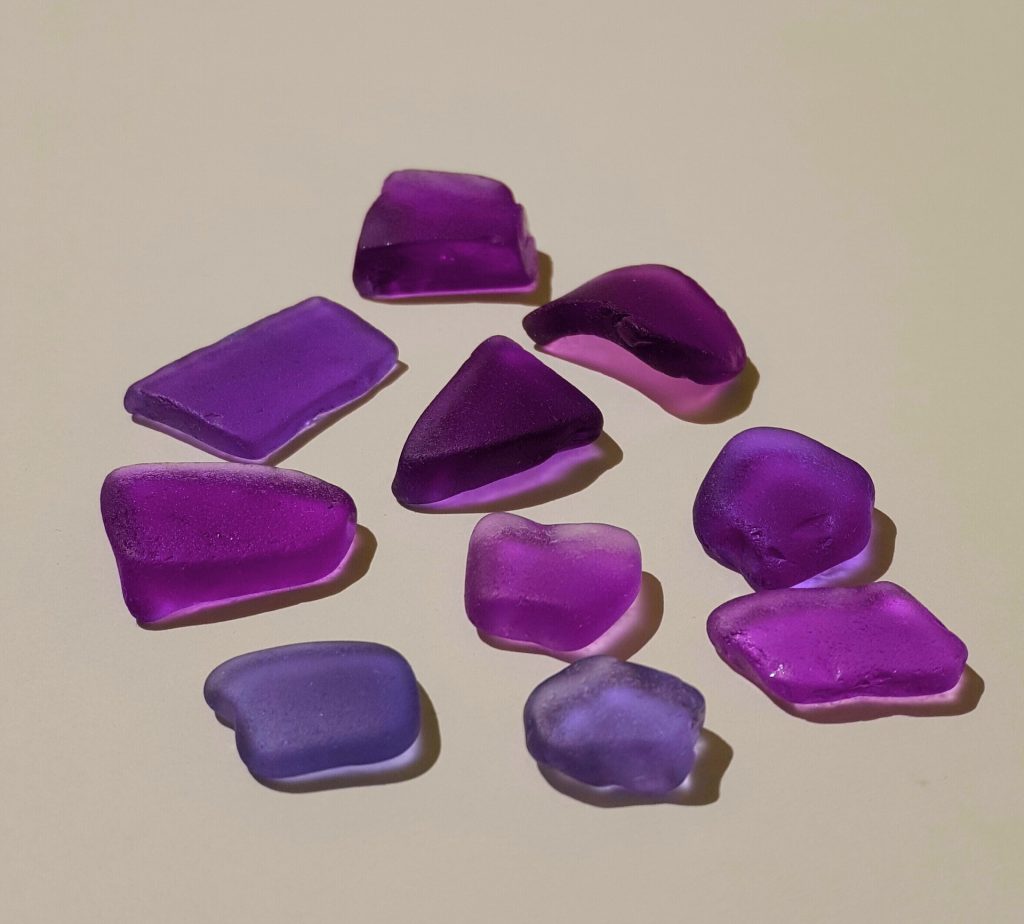
Uranium glass is made pretty much the same way as manganese glass but this time using uranium in the form of oxide diuranate. Instead of changing colour like the manganese glass, uranium glass will glow bright green when it is exposed to a UV light. It was popular glass during the 20th century and was used in many glass household items like tableware, vases and the like.
While we no longer produce these items using uranium glass, old uranium glass items are still considered to be a collectable item and for that reason are still quite valuable.
Uranium sea glass is always a super interesting find, especially to show off to friends. I think there is something quite eerie about uranium glass, but I’m also super fascinated by how it lights up and glows, it kind of reminds me of something nuclear.
Can you use uranium glass to make jewellery?
Yes, you can, most uranium glass is safe to use and wear as jewellery, but if you are unsure if your piece of glass is harmless you can test it with a Geiger meter just to be sure.
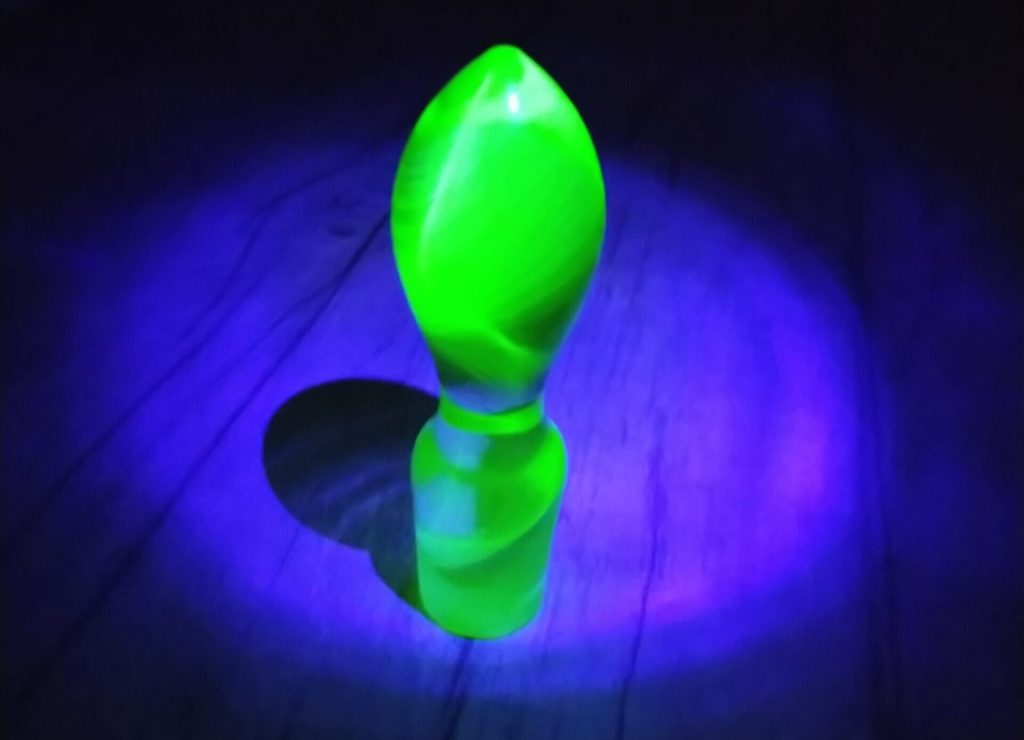
Other things you can make with sea glass
When thinking about what is sea glass worth? You should also factor in what other items you can make using it like;
- Jewellery
- Picture frames
- Suncatchers
- Pebble art
- Coasters
- Candleholders
- Keyrings
Sea glass can be worth more turned into something else rather than the actual piece itself. Some beaches produce sea glass, but it’s not always great sea glass. Even if a piece of sea glass is a little jagged or rough, it doesn’t mean it isn’t worth anything as they can be used to make something beautiful.
Other places to find glass
Sea glass isn’t just found in the sea, well that’s not entirely true, but we can find glass that looks just like sea glass, but it isn’t actually sea glass because it wasn’t found on the beach.
River glass is also a popular glass to find, it looks almost identical to sea glass, but it tends to be a bit grubbier as it doesn’t have the sand and saltwater to clean it. River glass does smooth off like sea glass does and can come in pretty much the same colours as sea glass.

Buying Sea glass, what to look out for
When buying sea glass, you should be careful that you are not buying fake sea glass. Fake sea glass is glass that has been artificially tumbled, so it resembles genuine sea glass, but you can tell the difference if you look closely.
Fake sea glass is usually smooth in its appearance.
Genuine sea glass has little dinks and dents all over it. If you look closer, you will see little c shaped marks on the surface; this cannot be recreated in a tumbler.
Fake sea glass usually comes in bright and bold colours and different variants of the same colour; they are also usually quite large.
Genuine sea glass generally comes in green, blue, aqua and brown and the more unusual colours are usually smaller pieces. There are not many variants, genuine sea glass is old, and they didn’t have that many colours to choose from.
I hope you have found this article useful and I wish you luck in your search for sea glass.


